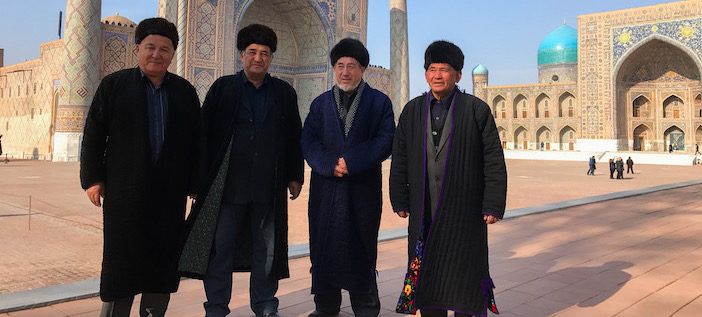I am Thomas Alexander Lindesay, people call me Tommy. I am a 16-year-old from the UK and am currently studying at NO. 55 Middle School of Beijing, where I take the IB curriculum.
I was born on the first year of the millennium, I have a brother 6 years older than me, and my father is a Great Wall conservationist, historian, and explorer. My mother has been supportive of him since the start. They have shown me over the years that learning is a never-ending struggle with time, as you never stop learning, no matter how old you are. Our family spends our summer and winter vacations traveling the world, seeing cultural and natural wonders around the globe. Since 2002, I have been to almost 35 countries.

At the dawn of this year, we decided to travel to Uzbekistan, an unlikely destination for Chinese tourists, but for us, it was an adventure. Uzbekistan is located in Central Asia, and is a double landlocked country that has suffered through the years from Mongol conquest to Russian occupation. Uzbekistan became independent in 1990, and began diplomatic relations with China in 1992.
After Uzbekistan became independent from Soviet Russia, it has attempted to regain some of its former glory. But after years of Soviet influence, this nation has been greatly distanced from both the West and the East, so we barely saw any Chinese people here. We flew from Beijing International Airport direct to Tashkent. We met a few business men from China on the plane, who were working for oil companies that were developing the local resources. They come here for a few months and go back to China for a month to visit their families; they all said that they had no interest in travelling in Uzbekistan, they were only here for business.
Here are a few reasons why there aren’t many travelers in Uzbekistan: visa difficulties, unnecessary bureaucracy, unstable currency, and the notorious scammers of Uzbekistan.
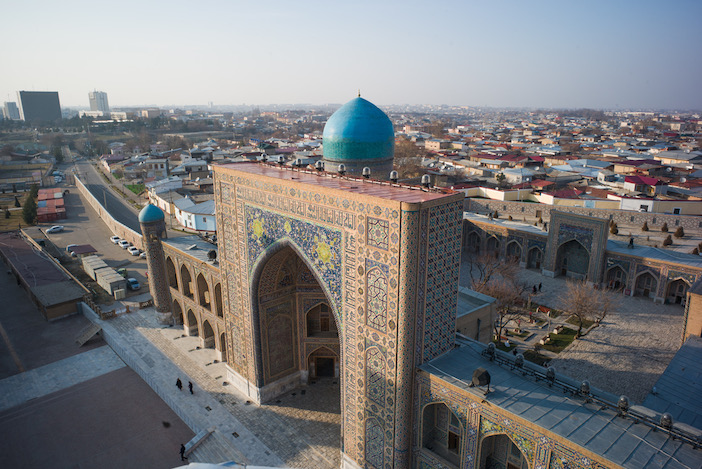
The flight is six hours long, but after we landed, we had to go through three hours of customs! Apart from the normal visa and passport control, there was a foreign currency declaration form that you had to fill in, so they know how much foreign currency you bring in and how much you take out of the country. But the problem was, this foreign currency form was either in Uzbek or Russian, but eventually we found an English copy and filled it in.
It was already midnight. A driver from the tour agency came to pick us up. Before we got to the hotel, he offered to exchange our USD for us, because if you exchange 1 USD at the bank, you get 3700 sum, but if you exchange it on the black market, you can get 6100 sum for each dollar! So we decided to exchange 200 USD and we would get 1.2 million on the black market. So the guy ran off into the darkness, leaving us in the car, and a few minutes later he came back with a black plastic bag full of money. It felt like we were robbing a bank!
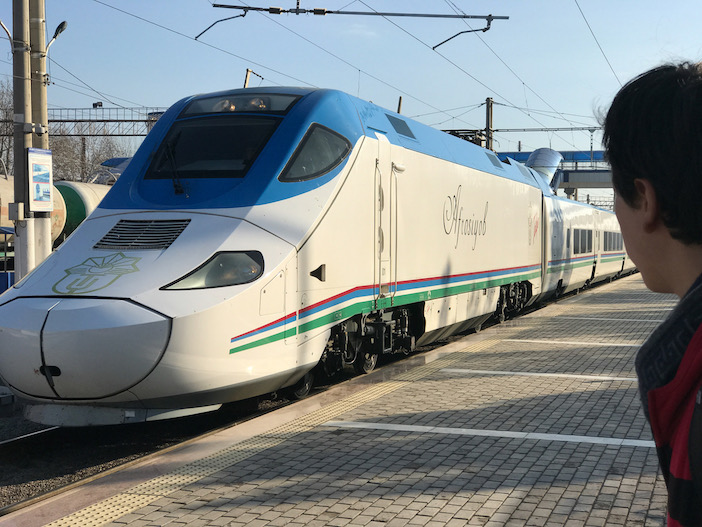
A lot of Uzbekistan is made in China. The high speed railway in Uzbekistan is the most advanced in the Stans, the trains themselves are Spanish, but the railing and tunneling was done with the help of Chinese technologies. China has built a huge web of high speed railways over the years, I don’t know about the quality, but it is cheap for travelers!
Uzbekistan was a jewel on the old Silk Road, and with the One Belt One Road policy of President Xi, China is creating good relations with countries along the old Silk Road, to benefit all of these Central Asian countries. In our IB curriculum, we often learn in Economics and History class the importance of the Old and New Silk Road. Through coming to Uzbekistan, I was able to witness this with my own eyes.
Samarkand was a trading center on the old Silk Road, goods from the East and the West flowed through this ancient capital. Archeologists are still making incredible finds here in the city, revealing some of its former glory.
Samarkand is the second largest city in Uzbekistan, Tashkent is the largest due to its recent development. But in Samarkand, Islamic culture and art can be properly appreciated. The city is home to the famous “Registan” square. It is composed of mosques and madrassas, and four towering minarets.
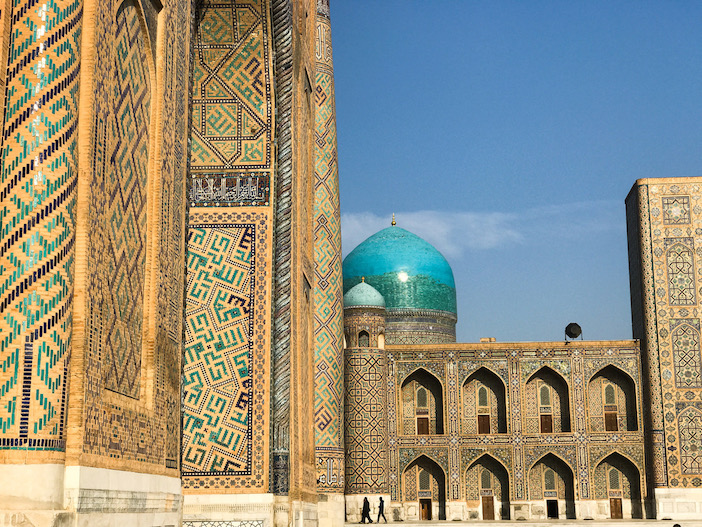
Legend says, when the Emperor Timur (descendant of Genghis Khan) was out of the city conquering neighboring lands, his wife was in charge of the construction of Registan. She invited a Persian architect to help her with the building, but her flawless beauty proved too much for the Persian architect to handle. He could not focus on his work, so one day he forcibly kissed her… when Timur came back and heard about this, he sentenced the architect to death by throwing him off one of the minarets of the Register, and left his body to be shamed and eaten by bottom feeders. Timur’s wife now had a permanent scar on her face in the shape of a pair of lips. Timur then ordered all women in Samarkand to wear veils, so they could hide from the eyes of men.
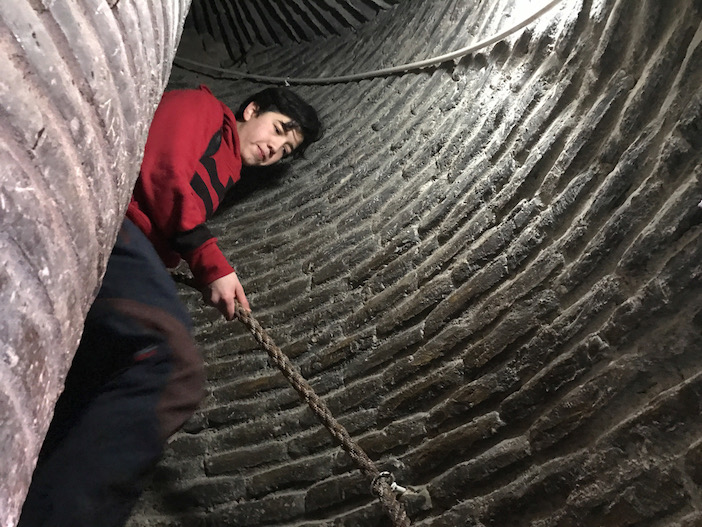
My dad and I climbed one of these minarets. But first, we had to become friends with the ticket man, who told us their story. He then took us to another young man, who brought us to a door in one of the mosques, which we entered and was then locked behind us. Within the door was another man that we each paid 10 USD, and he pointed to some stairs. We followed the stairs up, and they got higher and narrower until we finally reached the top. From the top of the minaret we could see the whole city, even the snowcapped mountains in the distance.
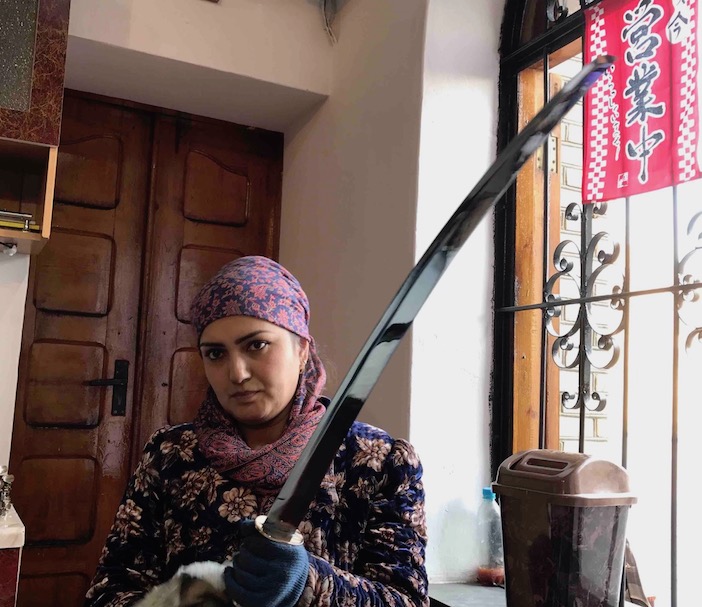
Our last stop in Uzbekistan was Bhukara, another city on the silk road. Here we visited many artisans such as blacksmiths, knife smiths, leather workers, and Suzanne women. Suzanne women are the women who make works of art with textiles. Many of the artisans are protected and supported by the title: Cultural Heritage. I, as a typical boy, love knives, so the Uzbek knife industry interested me the most. The city is most famous for Damascus steel blades. Damascus steel is created by hammering layers of steel together, folding it then hammering again, repeat this process until you have a blade that’s hundreds of layers thick that can chip rocks without denting itself.
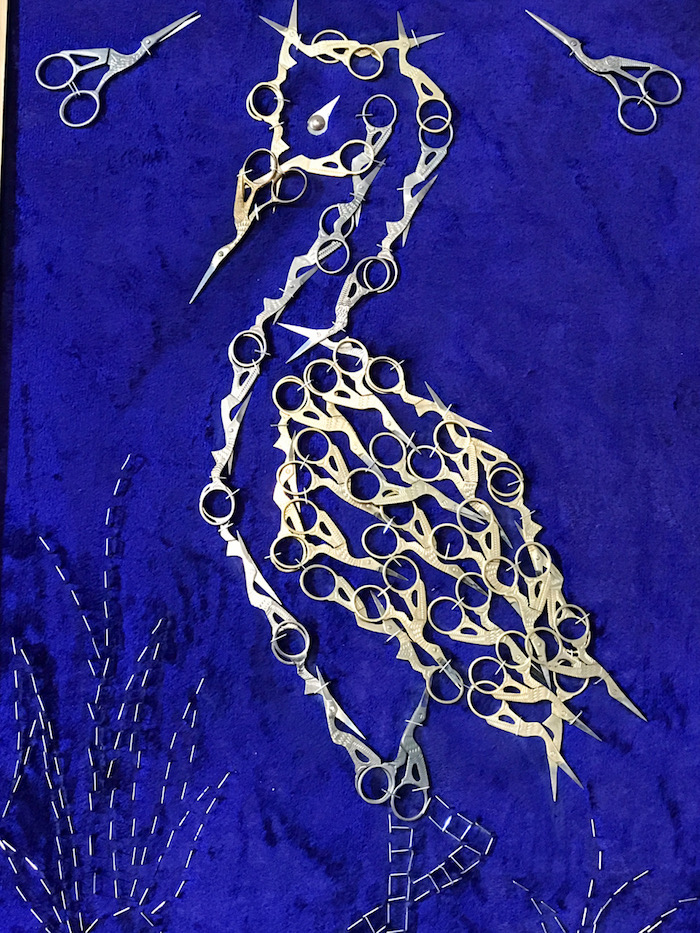
Since the age of two I have been traveling the world with my parents, and I have learnt many facts, lessons, and skills that are absent from any classroom curriculum. I think, to be a balanced student, you not only need to put work in school, but you also need to go out and see the world for yourself. I would like to thank No.55 middle school for all that I have learned, and my parents for taking me to this “traveling classroom.”
This post is provided by Beijing No.55 Middle School.
Photos: Thomas Alexander Lindesay

